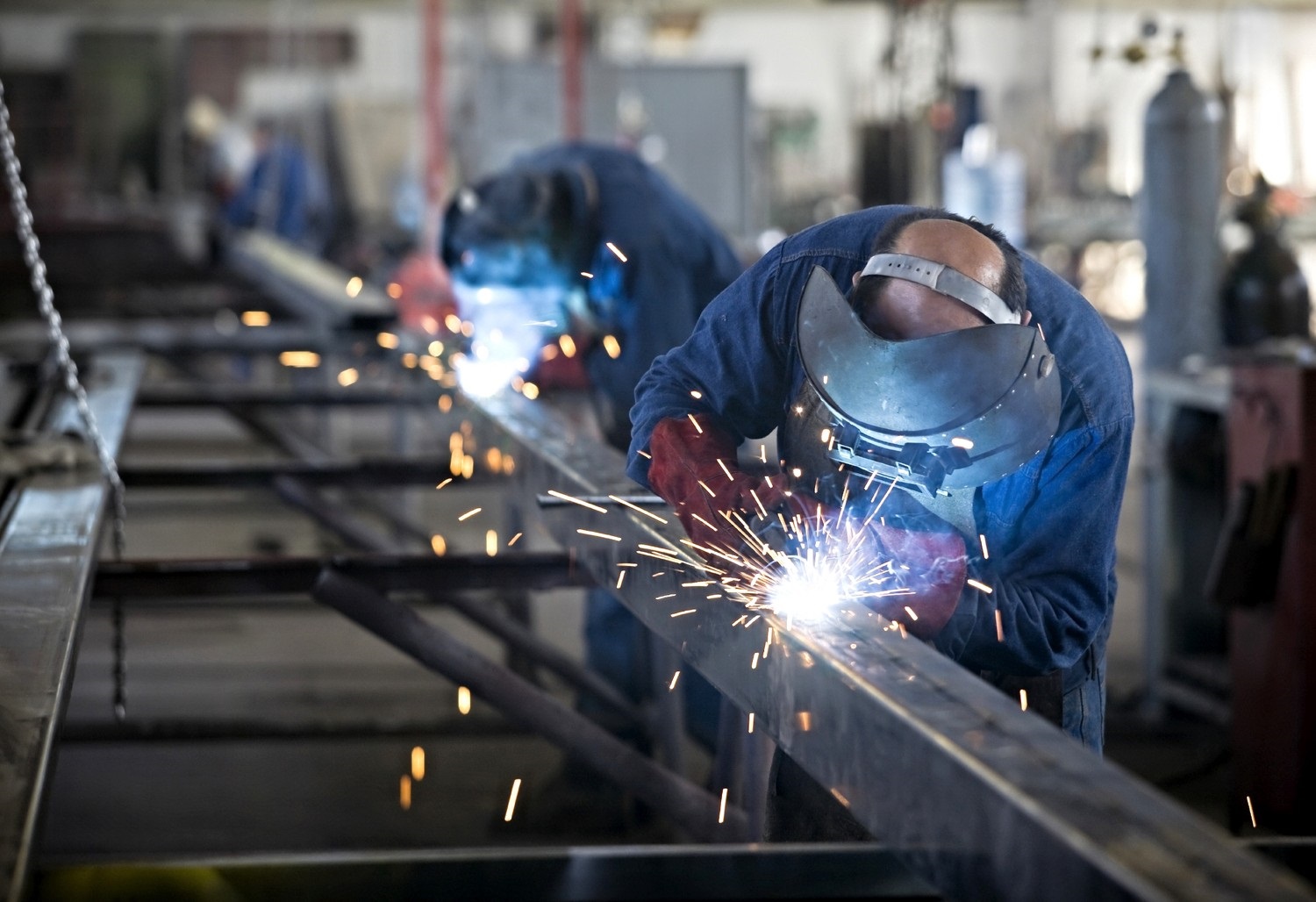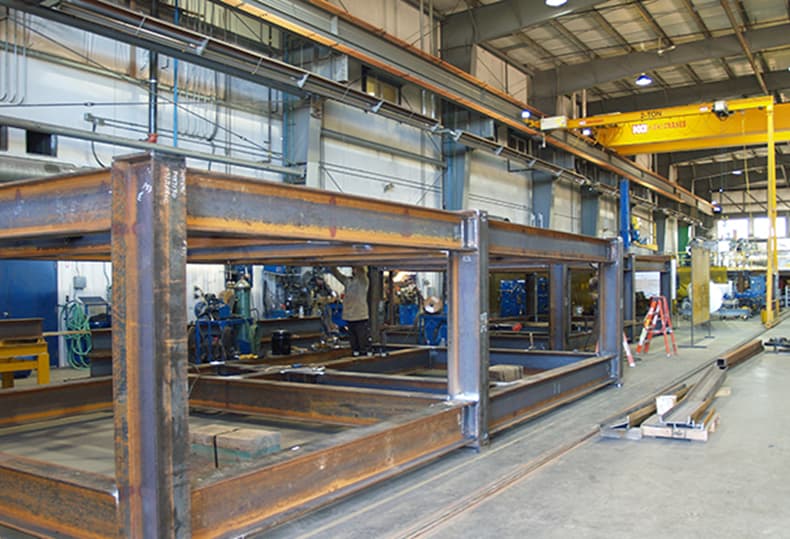Dependable Steel Fixing Providers: Ensuring Architectural Integrity
Dependable Steel Fixing Providers: Ensuring Architectural Integrity
Blog Article
Cutting-edge Trends in Steel Fabrication: Enhancing Sturdiness and Precision
In the realm of steel construction, the search of sturdiness and accuracy has actually led to a wave of ingenious patterns that are reshaping the market. These patterns are not simply forming the existing but likewise laying the groundwork for the future of steel manufacture, assuring additional enhancements in durability and precision.
Advanced Welding Technologies
In the world of steel construction, the fostering of cutting-edge welding modern technologies has actually dramatically changed the market's technique to attaining remarkable top quality and accuracy in structural welds. Advanced welding modern technologies, such as laser light beam welding and rubbing mix welding, have actually arised as game-changers in the field. By leveraging these advanced welding techniques, steel makers can boost the durability, toughness, and accuracy of their architectural welds, fulfilling the progressively demanding requirements of contemporary building and construction tasks.
Robot Automation in Construction
Accepting robotic automation has come to be a cornerstone of modern-day steel manufacture practices, improving procedures and improving effectiveness across the industry. Robotics are changing the method steel parts are manufactured, offering unparalleled precision and rate while decreasing human mistake. These automated systems can manage recurring tasks with consistent accuracy, leading to higher quality final product.
One trick benefit of robotic automation in steel construction is the capacity to work all the time without exhaustion, substantially enhancing production result. This continuous operation minimizes downtime and increases project timelines, ultimately conserving expenses for manufacturers. In addition, robots can be programmed to perform detailed tasks that may be unsafe or difficult for human workers, boosting safety in the work environment.
In addition, robotic automation allows smooth integration with various other electronic technologies, such as computer-aided style (CAD) software program and Net of Things (IoT) systems (Alpha reo). This interconnected strategy improves interaction between different stages of construction, enhancing operations and making sure real-time monitoring and control. As the steel fabrication market remains to develop, robot automation stands apart as a transformative force driving effectiveness and accuracy in producing processes

High-Strength Alloy Development
The advancement of high-strength alloy advancement in steel construction is reshaping the market's method to enhancing product longevity and efficiency. High-strength alloys are engineered to show exceptional mechanical residential or commercial properties, such as enhanced tensile strength, strength, and rust resistance contrasted to typical steel grades. By incorporating these innovative alloys into construction procedures, suppliers can produce elements that endure greater stress levels and severe settings, resulting in more dependable and durable final product.
One trick advantage of high-strength alloy growth is the ability to reduce material density without endangering architectural integrity. This not only results in lighter-weight elements but likewise contributes to set you back financial savings and boosted effectiveness in fabrication and assembly procedures. In addition, the improved strength-to-weight proportion of these alloys permits the style and building of structures with greater load-bearing capabilities while minimizing total weight.
3D Modeling and Simulation Software Program
Developments in steel fabrication procedures have been significantly driven by the assimilation of advanced 3D modeling and simulation software tools. These devices enable producers to create detailed online versions of their tasks, enabling them to envision the end product with accuracy before any kind of physical work starts. By replicating different stress variables, ecological problems, and architectural loads, producers can optimize styles for improved longevity and efficiency. In addition, 3D modeling and simulation software application enhance the manufacturing process by recognizing prospective problems beforehand, lowering the requirement for expensive rework and why not look here decreasing product waste.

Lasting Practices in Steel Production
Including lasting practices into steel manufacturing processes is necessary for reducing ecological effect and making sure long-term source schedule. One crucial lasting method is the fostering of energy-efficient innovations to decrease greenhouse gas emissions during the steel production process. This includes using renewable resource resources, such as solar or wind power, to power steel plants and applying energy-efficient devices to optimize power use.
One more vital aspect of lasting steel manufacturing is the liable sourcing of resources. This entails guaranteeing that the iron ore and other sources used in steelmaking are gotten from honest and eco-friendly sources. By promoting openness in the supply chain and sticking to rigorous environmental criteria, steel suppliers can lessen the negative impacts of source removal on neighborhood ecological communities and areas.

Final Thought
In conclusion, the cutting-edge fads in steel manufacture such as sophisticated welding technologies, robotic automation, high-strength alloy advancement, 3D modeling and simulation software program, and lasting techniques are improving the longevity and accuracy of steel products. These advancements are changing the steel construction market by boosting quality, sustainability, and performance. It is clear that the future of steel fabrication Full Report exists in welcoming these sophisticated modern technologies to fulfill the needs of contemporary building see and manufacturing sectors.
In the realm of steel manufacture, the search of resilience and precision has actually led to a wave of ingenious patterns that are improving the sector.In the world of steel fabrication, the adoption of innovative welding technologies has actually substantially changed the market's method to attaining superior high quality and accuracy in structural welds. As the steel manufacture industry continues to progress, robot automation stands out as a transformative force driving efficiency and accuracy in making procedures.
Moreover, reusing and reusing steel scrap and waste materials play a significant function in improving the sustainability of steel production. metal fabrication melbourne.In conclusion, the ingenious trends in steel manufacture such as innovative welding technologies, robot automation, high-strength alloy development, 3D modeling and simulation software, and sustainable methods are enhancing the sturdiness and precision of steel items
Report this page